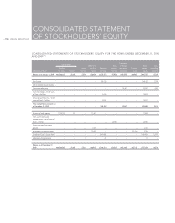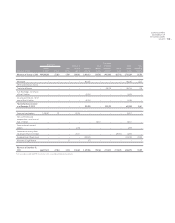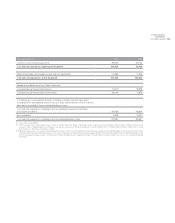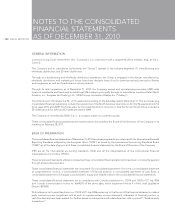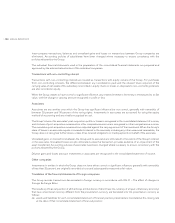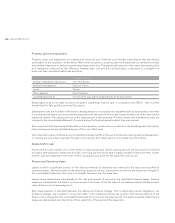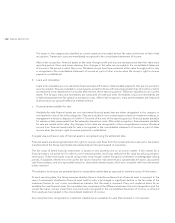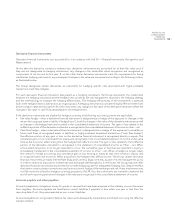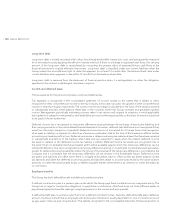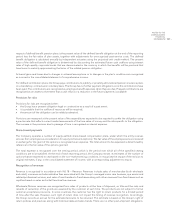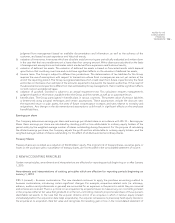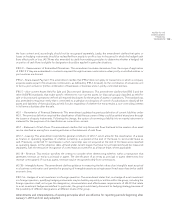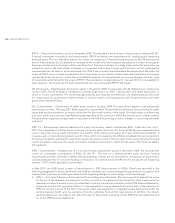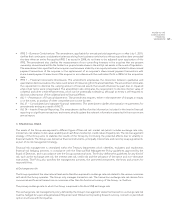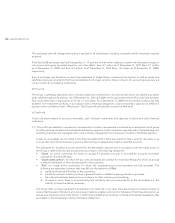LensCrafters 2010 Annual Report Download - page 130
Download and view the complete annual report
Please find page 130 of the 2010 LensCrafters annual report below. You can navigate through the pages in the report by either clicking on the pages listed below, or by using the keyword search tool below to find specific information within the annual report.ANNUAL REPORT 2010> 128 |
The assets in this category are classified as current assets and recorded at their fair value at the time of their initial
recognition. Transaction costs are immediately recognized in the consolidated statement of income.
After initial recognition, financial assets at fair value through profit and loss are remeasured at their fair value each
reporting period. Gains and losses deriving from changes in fair value are recorded in the consolidated statement
of income in the period in which they occur. Dividend income from financial assets at fair value through profit or loss
is recognized in the consolidated statement of income as part of other income when the Group’s right to receive
payments is established.
b. Loans and receivables
Loans and receivables are non–derivative financial assets with fixed or determinable payments that are not quoted in
an active market. They are included in current assets, except for those with maturities greater than 12 months or which
are expected to be repaid within 12 months after the end of the reporting period. These are classified as non–current
assets. The Group’s loans and receivables are comprised of trade and other receivables. Loans and receivables are
initially measured at their fair value plus transaction costs. After initial recognition, loans and receivables are measured
at amortized cost, using the effective interest method.
c. Financial assets available for sale
Available–for–sale financial assets are non–derivatives financial assets that are either designated in this category or
not classified in any of the other categories. They are included in non–current assets unless the investment matures or
management intends to dispose of it within 12 months of the end of the reporting period. Financial assets available
for sale are initially measured at their fair value plus transaction costs. After initial recognition, financial assets available
for sale are carried at fair value. Any changes in fair value are recognized in other comprehensive income. Dividend
income from financial assets held for sale is recognized in the consolidated statement of income as part of other
income when the Group’s right to receive payments is established.
A regular way purchase or sale of financial assets is recognized using the settlement date.
Financial assets are derecognized when the rights to receive cash flows from the investments have expired or have been
transferred and the Group has transferred substantially all risks and rewards of ownership.
The fair value of listed financial instruments is based on the quoted price on an active market. If the market for a
financial asset is not active (or if it refers to non–listed securities), the Group defines the fair value by utilizing valuation
techniques. These techniques include using recent arms–length market transactions between knowledgeable willing
parties, if available, reference to the current fair value of another instrument that is substantially the same, discounted
cash flows analysis, and pricing models based on observable market inputs, which are consistent with the instruments
under valuation.
The valuation techniques are primarily based on observable market data as opposed to internal sources of information.
At each reporting date, the Group assesses whether there is objective evidence that a financial asset is impaired. In the
case of investments classified as financial asset held for sale, a prolonged or significant decline in the fair value of the
investment below its cost is also considered an indicator that the asset is impaired. If any such evidence exists for an
available–for–sale financial asset, the cumulative loss, measured as the difference between the cost of acquisition and the
current fair value, net any impairment loss previously recognized in the consolidated statement of income, is removed
from equity and recognized in the consolidated statement of income.
Any impairment loss recognized on investment classified as an available–for–sale financial asset is not reversed.


